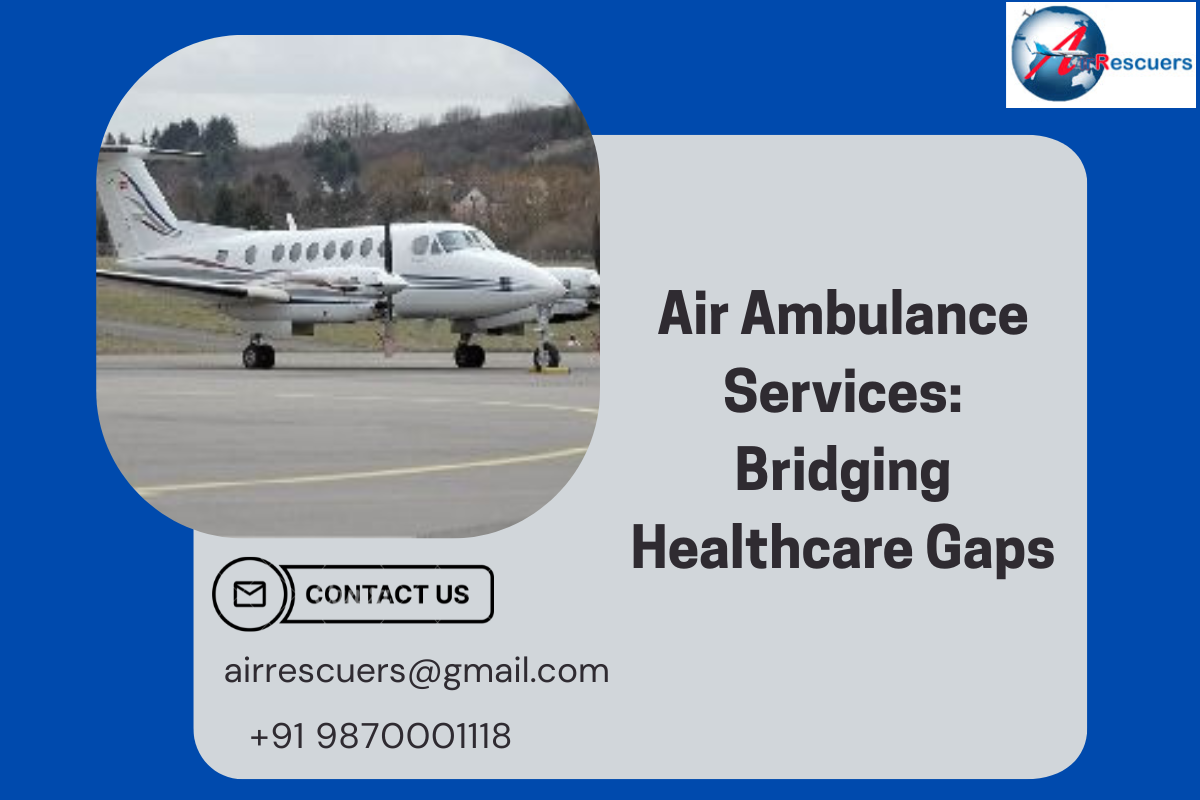In medical emergencies, time is often the most critical factor that determines patient survival. Air Ambulance services play a pivotal role in ensuring rapid medical transportation, particularly in areas where healthcare infrastructure is limited or inaccessible. With the advancement of medical aviation technology, Air Ambulances have emerged as a lifesaving solution, bridging the gap between critically ill patients and advanced healthcare facilities.
The Growing Need for Air Ambulance Services
The increasing demand for Air Ambulance services is driven by multiple factors, including rising health emergencies, increased road congestion, and the need for specialized medical care. Many remote and rural areas lack adequately equipped hospitals, making air medical transport the only viable option for timely treatment. Moreover, as global healthcare improves, patients often require intercity or even international transfers for advanced treatments such as organ transplants, cardiac surgeries, or trauma care.
How Air Ambulance Services Work
Air Ambulance services operate through a well-coordinated system involving medical experts, aviation professionals, and emergency responders. When a patient requires urgent medical attention, the Air Ambulance team quickly mobilizes, ensuring rapid transfer from the accident site or medical facility to a hospital equipped with the necessary treatment facilities. These services are provided using aircraft, helicopters, or chartered flights, equipped with life-support systems, ICU setups, ventilators, and emergency medications.
Types of Air Ambulance Services
1. Helicopter Air Ambulance
Helicopter ambulances are ideal for short-distance emergency evacuations, particularly in urban areas or locations with difficult terrain, such as mountains or forests. They are often deployed in case of accidents, disasters, or critical patient transfers where road transport would be too slow.
2. Fixed-Wing Air Ambulance
For long-distance medical transportation, fixed-wing aircraft (jets and turboprops) are used. These planes are modified with medical-grade equipment and can cover vast distances quickly, making them suitable for intercity and international patient transfers.
3. Commercial Stretcher Services
In cases where a patient is stable but requires medical supervision, commercial stretcher services allow for affordable air transportation by converting a section of a commercial flight into a mini ICU setup.
Key Benefits of Air Ambulance Services
1. Rapid Medical Assistance
Air Ambulances provide the fastest mode of emergency medical transportation, ensuring that patients reach healthcare facilities in the shortest possible time. This is particularly beneficial for trauma cases, cardiac arrests, strokes, and other life-threatening conditions where every second matters.
2. Access to Specialized Treatment
Patients in rural or underdeveloped areas often do not have access to specialized healthcare. Air Ambulances enable them to be transported to major cities where advanced medical interventions are available.
3. ICU-Level Care During Transit
Unlike regular ambulances, Air Ambulances come equipped with intensive care unit (ICU) setups, allowing critically ill patients to receive life-saving treatments while en route to a medical facility. Trained paramedics and doctors accompany the patient, ensuring their condition remains stable during transit.
4. Disaster and Emergency Relief
Air Ambulances play a crucial role in disaster response, helping evacuate people from natural disaster sites, war zones, or accident-prone areas. During floods, earthquakes, or pandemics, they ensure that medical aid reaches those in need.
5. Organ Transplant and Medical Tourism Support
The demand for organ transplantation is increasing, and the availability of donor organs is often limited to specific locations. Air Ambulances transport both donor organs and recipients efficiently, ensuring that time-sensitive procedures are carried out successfully. Additionally, they aid in medical tourism by providing safe and swift patient transfers across countries.
Challenges in Air Ambulance Services
Despite their many advantages, Air Ambulance services face several challenges:
- High Costs: Air medical transport is expensive due to fuel, aircraft maintenance, medical equipment, and specialized personnel costs.
- Weather Conditions: Bad weather can delay flights, making emergency responses difficult.
- Regulatory Approvals: Different countries and regions have varying aviation and medical transport regulations, which can create administrative hurdles.
- Limited Awareness: Many people are unaware of Air Ambulance services or how to access them, limiting their usage in emergencies.
Improving the Accessibility of Air Ambulance Services
To make Air Ambulance services more accessible and efficient, several measures can be taken:
- Government and Insurance Support: Subsidies and insurance coverage for air medical transport can make these services more affordable.
- Enhanced Infrastructure: More helipads and dedicated Air Ambulance hubs can improve emergency response times.
- Public Awareness Campaigns: Educating people about Air Ambulance services can help them make informed decisions during emergencies.
- Advancements in Aviation Technology: Developing cost-effective, fuel-efficient medical aircraft can reduce operational costs and expand service availability.
Conclusion
Air Ambulance services have become a crucial part of modern healthcare, ensuring that critically ill and injured patients receive timely and specialized medical care. By bridging the gap between healthcare facilities and patients in need, these services save countless lives each year. As technology advances and awareness increases, Air Ambulances will continue to play an essential role in emergency medical response, making healthcare more accessible to all. Additionally, Air Ambulance Services in Nagpur play a vital role in providing rapid and efficient medical transportation, ensuring patients receive the best possible care without delays.
